Small phenomenal things
The work of the Glasgow-based filmmaker LUKE FOWLER, from his early portraits of iconoclastic figures like Cornelius Cardew or Xentos Jones, to more recent investigations into the material properties of film are governed by two abiding interests – forging collaborative relationships with others, and revealing the »small phenomenal things«. By SARAH LOWNDES
»I was beginning to pay more attention to my surroundings, seeing an odd kind of beauty in what would otherwise be considered a drab communal hallway« says Anna McLauchlan in the voiceover that accompanies Paddington Collaboration (2007), a film in which she follows the Glasgow-based artist Luke Fowler as he documents the minutiae of an apartment building in London. The film is in some ways a reversal of Nancy Holt and Robert Smithson’s notorious collaboration Swamp (1971) in which Smithson orders a disorientated Holt to keep filming as she stumbles ahead of him through the New Jersey grasslands. In Fowler and McLauchlan’s slow urban exploration no one is being rushed – indeed at one point McLauchlan wonders out loud if they will ever leave the building, so meticulous is the documenting of the moiré patterns of the net curtains in the hall.
Luke Fowler came to prominence through three films about radical thinkers, What You See Is Where You’re At (2001), concerning the work of Scottish psychiatrist, psychoanalyst and ‘60s zeitgeist writer R.D. Laing,The Way Out (with Kosten Koper) (2003), which profiled the enigmatic The Homosexuals frontman Xentos Jones, and Pilgrimage From Scattered Points (2006), a portrait of maverick English composer Cornelius Cardew. Each of these films were pieced together from found footage, archival materials and reinterpretations of original texts, making each film a reopening of a dialogue on historical figures and events. However, since Fowler began making films on 16mm film in the last two years, he has become increasingly interested in the material properties of film, and inspired by so-called »room films« like Gill Eatherley’s triple screen projection Pan Film (1972), Michael Snow’s classic Wavelength(1967) and Butler and Mirza’s recent Where A Straight Line Meets A Curve, (2003). As he explains, »Room films reflect the Structuralist filmmaker’s interest in the recording of space, light and process over traditional cinema’s interest in location, character and plot. What’s important isn’t always what you put in front of the camera but the approach you take to shooting. Technique becomes substance.« Paddington Collaboration foregrounds two of the key themes that have underpinned Luke Fowler’s practice throughout his early bricolage portraits, and his less narrative-driven recent works. These are: his work as a means of forging collaborative relationships with others, and his interest in »small phenomenal things« that may often be overlooked. In this aspect his work has an important commonality with the techniques employed by the Free Cinema movement, which, as the film and television theorist John Ellis observed, »used montage techniques and sound-image disjunctions to produce films […] not of what things really ›look like‹ but how they really are.« A good recent example of this is George (2008), which Fowler describes as »a very basic film about observation and the interaction between sounds and images. It was shot between Gordon Schmidt’s flat in Garnethill – who had invited me to do a show – and my house in North Kelvinside. I filmed and recorded these spaces between buildings, which contain incredible acoustic phenomena like standing waves and echoes that you can only hear with the right kind of microphones.« The complex and disconcerting soundtracks to Fowler’s films (often collaborations with artists working with sound) reflect his longstanding interest in tape technology, self-invented instruments and more recently, field recordings. These interests have been investigated for the last ten years through Fowler’s independent label Shadazz, and through playing in two experimental groups, Rude Pravo and Lied Music. Fowler says, »I like this quote from Bresson that I heard recently: ›I don’t make works. I make strivings.‹ For me the recent films are very much strivings rather than finished works, and as much come out of a need to explore and familiarise myself with my materials, camera and microphones, using the occasions of commissions from others to do so.« As a consequence of winning the inaugural Jarman Award for artist filmmakers in 2008, Fowler’s recent commissions have included four Three-Minute Wonder films, screened over the course of a week in April this year on Channel 4. For this commission, Fowler chose to focus upon the tenement building in which he then lived – asking permission from four of the buildings occupants to film inside their flats. Fowler, with his wind-up Bolex camera and a collection of microphones, recorded the objects and sounds in the rooms lived in by Anna, Helen, David and Lester (all 2008), in a way revealing not only the personalities of his absent subjects, but also what he calls »the layers of time in the flats«. In Lester for example, the footage of leatherette cases for holding vinyl singles, and piles of VCR and cassette tapes, is suggestive of a way of listening to the world that is being erased by the digitized age.Fowler’s intensively researched and carefully observed works effect a reversal of the superficiality and escapism of contemporary culture. Roland Barthes wrote in Camera Lucida (1980) that cameras were »clocks for seeing with«. The durations that Fowler reveals are related less to clock time than to exposing underlying conditions, as is the case with his film, Hidden Knowledge (2006), which appears to be a single sustained shot of a green lake, shot through layers of golden leaves. The gradual darkening of the water and the dulling of the lustre of the leaves catches the viewer unaware, as they have been lulled into a trance by the movement of the tree branches in the breeze. He is fond of using time lapse photography, not as a means of fast-forwarding through existence, but as a way of revealing the hidden patterns of existence, such as the shadows of clouds racing across the fields shown in his collaboration with Lee Patterson, B8016 (2008) or the sped-up footage of street traffic used in David (2008). In the sequence from David, layers of footage shot from the window throughout the day are superimposed to create a tissue of simultaneous routes taken by numerous cars, a cyclist and a dreamy girl who takes all day and night to slowly cross the street. Despite these developments, Fowler has not left his early concerns with character behind completely. His recent film Bogman Palmjaguar (2007) could be seen as a reconciliation of his earlier bricolage portraits with his more recent immersion in Structuralist film theory. The film is a portrait of a man who, after a series of disturbing events, becomes distrustful of people and withdraws into nature, shot during two visits to Bogman’s home in a remote village in the north of Scotland. The film was made in collaboration with sound artist Lee Patterson, and documents the Flow Country environment, which the Bogman sought to preserve during his time as a conservationist. The film succeeds as a compassionate and moving depiction of a gifted yet eccentric individual – however it also possesses a poetic, almost hypnotic quality in sequences where the Bogman describes the calls of the birds that so move him, »golden plover, curlew, green shank, black throated divers …« and the camera reveals gorse bushes, herds of wild stags or a golden eagle wheeling in the air. May 2009 saw the opening of the first major survey of Fowler’s work at the Serpentine Gallery, which will include a new piece, Composition for Flutter Screen (2008) a collaborative work made with Japanese sound artist Toshiya Tsunoda, which focuses on simple objects or phenomena seen under continually changing conditions. Fowler explains that this film, too, is a kind of »fractured portrait« and that the four objects shown in the film (the trembling meniscus on a glass of water, a vibrating wire, two burning candles and a relief map of mountains) are oblique reflections of Tsunoda and his work. This work too, serves to focus the spectator’s attention on what Andrei Tarkovsky described as »what lies within the world itself, what is essential to it and does not depend on us.«
SARAH LOWNDES is a lecturer and writer based in Glasgow.
LUKE FOWLER, born 1978 in Glasgow. Lives in Glasgow. Recent solo exhibitions include a.o. Serpentine Gallery London (2009), Kunsthalle Zurich (2008), Extra City Antwerpen (2007), Pilgrimage From Scattered Points, White Columns, New York (2006). Exhibition participations include The Long Weekend, Tate Modern London; Yokohama Triennial; Pop! goes the weasel, Badischer Kunstverein, Karlsruhe (2008); Organizing Chaos, P.S.1 Contemporary Art Center, Long Island City (2007); Normalisering, Rooseum Centre for Contemporary Art, Malmö (2006).
Represented by The Modern Institute, Glasgow
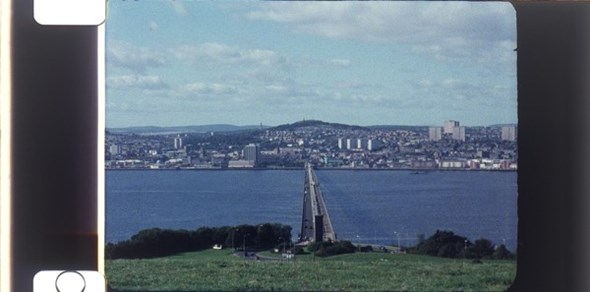
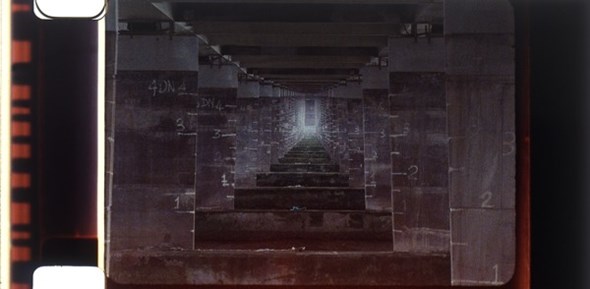
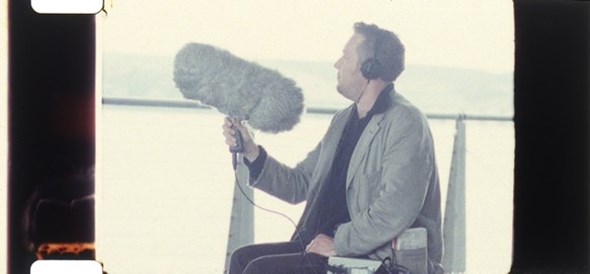
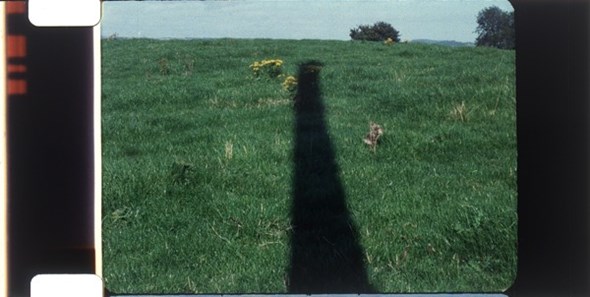
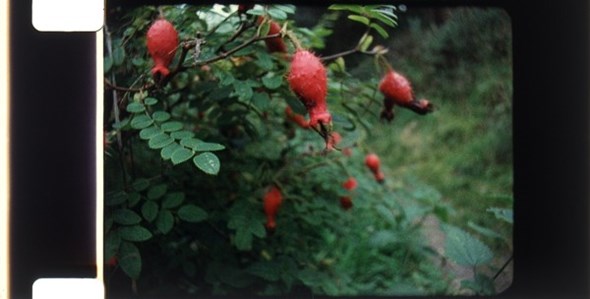
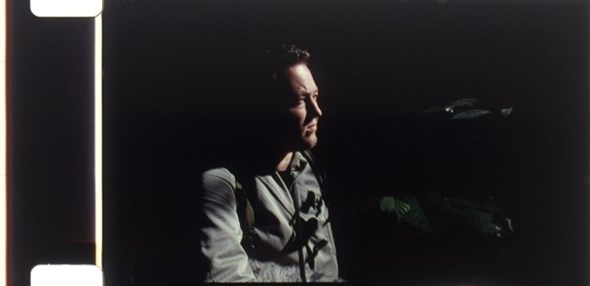
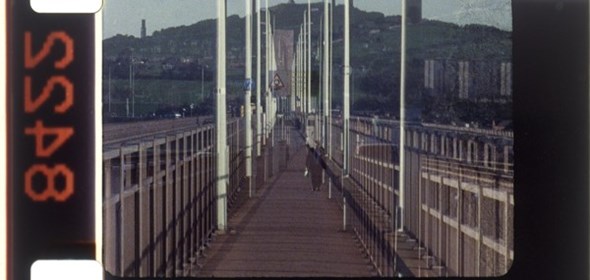
Northwest from Chesterhill, 2008-ongoing
